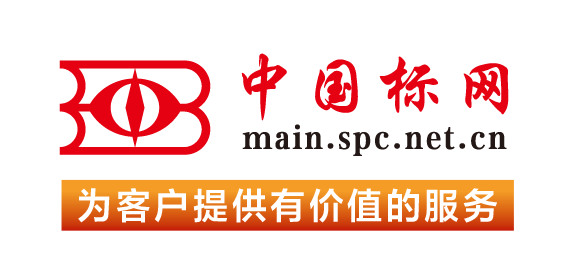【国外标准】 Standard Guide for Selection and Use of Liquid Coating Encapsulation Products for Leaded Paint in Buildings
本网站 发布时间:
2024-02-28
开通会员免费在线看70000余条国内标准,赠送文本下载次数,单本最低仅合13.3元!还可享标准出版进度查询、定制跟踪推送、标准查新等超多特权!
查看详情>>
适用范围:
4.1 This standard primarily addresses encapsulant products for residential and child-care facilities. It may also be appropriate for some commercial buildings.4.2 Encapsulation provides a means of protecting occupants from exposure to lead in paint in buildings that are likely to remain standing for a long period of time. This nondestructive abatement strategy is useful in situations in which the primary structure needs to remain intact for either historical or economic reasons. Encapsulation offers an abatement strategy that may be more cost effective than abatement by removal of the paint.4.3 There are many environmental and use conditions that affect leaded paint liquid coating encapsulation products, and different types of liquid coating encapsulation products have been developed specifically to meet the requirements of the various conditions. Product types include non-reinforced liquid coatings, as well as products for interior or exterior use. These products may be applied over many different surfaces coated with one or more layers of leaded paint and possibly other coatings. Encapsulation products in service are subjected to many kinds of wear. Various colors and finishes are also available. This guide is intended to assist the purchaser in determining which product is most appropriate for the specific conditions under which the product will be used.4.4 As described in this guide, an encapsulation product must be compatible with the surface to which it is applied. An encapsulation product must bond to the surface coating, and not cause the subsurface layers to separate or deteriorate.1.1 This guide is intended to provide building users such as private building owners, contractors, architects, homeowners, and regulatory authorities with assistance in selecting an appropriate liquid coating encapsulation product for architectural residence and child-care facility use situations for abating leaded paint. This guide also provides information that can be used to assist in the following: (1) determining whether a painted surface is suitable for encapsulation, (2) applying a liquid coating encapsulation product, (3) evaluating installed liquid coating encapsulation products, and (4) maintaining the encapsulated surface.1.2 This guide applies to any liquid-applied product that relies primarily on adhesion for attachment to the surface and is designed to reduce human exposure to lead in paint.1.3 This guide is not intended for use as a training manual. The information contained herein is not all-inclusive and does not provide comprehensive instructions for the selection, application, or maintenance of specific liquid coating encapsulation products. This guide is intended to supplement information supplied by encapsulation product manufacturers and safety requirements established by law. The user of this guide shall refer to the encapsulation product manufacturer’s instructions for encapsulation product application and maintenance.1.4 This guide does not cover minimum material performance requirements for liquid coating encapsulation products. Performance specifications for non-reinforced liquid coating encapsulation products are provided in Specification E1795.1.5 Encapsulation products for use on industrial steel structures are not covered in this guide. Industrial steel structures include, but are not limited to, bridges, water towers, and tanks.1.6 Limited documentation is available on evaluating the field performance of liquid coating encapsulation products. A conservative approach to assessing the selection and use of liquid coating encapsulation products is thus adopted in this guide. As appropriate, the guidance provided within will be revised as additional knowledge regarding how these products perform over time is gained.1.7 The user of this guide should follow all regulations promulgated by authorities having jurisdiction regarding the use of encapsulation products.1.8 The values stated in SI units are to be regarded as standard. The values given in parentheses after SI units are provided for information only and are not considered standard.1.9 This standard does not purport to address all of the safety concerns, if any, associated with its use. It is the responsibility of the user of this standard to establish appropriate safety, health, and environmental practices and determine the applicability of regulatory limitations prior to use.1.10 This international standard was developed in accordance with internationally recognized principles on standardization established in the Decision on Principles for the Development of International Standards, Guides and Recommendations issued by the World Trade Organization Technical Barriers to Trade (TBT) Committee.
标准号:
ASTM E1796-20
标准名称:
Standard Guide for Selection and Use of Liquid Coating Encapsulation Products for Leaded Paint in Buildings
英文名称:
Standard Guide for Selection and Use of Liquid Coating Encapsulation Products for Leaded Paint in Buildings标准状态:
Active-
发布日期:
-
实施日期:
出版语种:
- 推荐标准
- ASTM 51401-21 Standard Practice for Use of a Dichromate Dosimetry System
- ASTM 51956-21 Standard Practice for Use of a Thermoluminescence-Dosimetry System (TLD System) for Radiation Processing
- ASTM A1010/A1010M-24 Standard Specification for Higher-Strength Martensitic Stainless Steel Plate, Sheet, and Strip
- ASTM A1016/A1016M-24 Standard Specification for General Requirements for Ferritic Alloy Steel, Austenitic Alloy Steel, and Stainless Steel Tubes
- ASTM A105/A105M-24 Standard Specification for Carbon Steel Forgings for Piping Applications
- ASTM A1064/A1064M-24 Standard Specification for Carbon-Steel Wire and Welded Wire Reinforcement, Plain and Deformed, for Concrete
- ASTM A108-24 Standard Specification for Steel Bar, Carbon and Alloy, Cold-Finished
- ASTM A1080/A1080M-24 Standard Practice for Hot Isostatic Pressing of Steel, Stainless Steel, and Related Alloy Castings
- ASTM A1090/A1090M-19(2024) Standard Specification for Forged Rings and Hollows for Use as Base Plates in Power Transmission Structures
- ASTM A1115/A1115M-24 Standard Practice for Construction of Mechanically Stabilized Earth Walls with Inextensible Soil Reinforcement
- ASTM A1128-24 Standard Specification for Stainless Steel Shielded, Rubber Gasketed Couplings Having an Integral Restraint Feature for Joining Hubless Cast Iron Soil Pipes and Fittings Where External Restraint Is Required
- ASTM A179/A179M-24 Standard Specification for Seamless Cold-Drawn Low-Carbon Steel Heat-Exchanger and Condenser Tubes
- ASTM A234/A234M-24 Standard Specification for Piping Fittings of Wrought Carbon Steel and Alloy Steel for Moderate and High Temperature Service
- ASTM A242/A242M-24 Standard Specification for High-Strength Low-Alloy Structural Steel
- ASTM A249/A249M-24a Standard Specification for Welded Austenitic Steel Boiler, Superheater, Heat-Exchanger, and Condenser Tubes
 我的标准
我的标准 购物车
购物车 400-168-0010
400-168-0010














